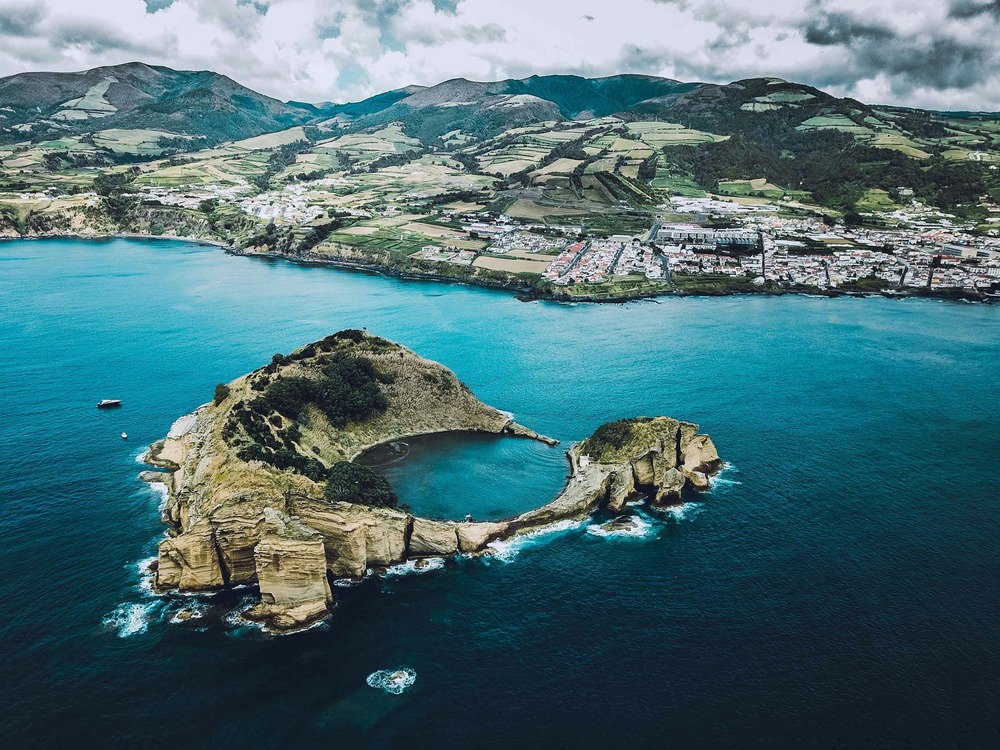Best Time To Visit
best time to visit azores
The Azores archipelago, a cluster of nine volcanic islands flung across the mid-Atlantic, presents a unique allure for travelers. Known for dramatic landscapes carved by volcanic activity, lush greenery, and a remarkably mild climate, these Portuguese islands offer a distinct European destination. While their beauty persists year-round, potential visitors often ask: when is the best time to experience the Azores?
The answer isn’t entirely straightforward. While the islands are welcoming throughout the year, certain periods offer distinct advantages depending on individual priorities – whether seeking optimal weather, specific activities, fewer crowds, or better value. This guide will delve into the nuances of Azores weather, break down the travel seasons, explore activity peaks, and examine crowd levels to help determine the ideal time for your perfect Azorean adventure.
Quick Answer: The Best Months to Visit the Azores (and Why)
For those seeking a swift recommendation, the general consensus points towards late spring through early fall as the prime window for visiting the Azores. Specifically, the months from May to October are frequently highlighted as offering the most appealing conditions.
During this period, travelers can generally expect the most pleasant combination of warmer temperatures, increased hours of sunshine, and landscapes bursting with color, particularly the famous hydrangeas and blooming flora in late spring and summer. This timeframe aligns conveniently with the peak seasons for many popular Azorean activities, including hiking under clearer skies, enjoying the volcanic beaches, and embarking on whale watching excursions. The weather tends to be milder, making exploration more comfortable.
However, it’s important to note a subtle distinction within this broad recommendation. The absolute peak summer months, June through August, typically boast the warmest weather and are considered the height of the beach and festival season. This popularity, however, comes with trade-offs, namely larger crowds and potentially higher costs for flights and accommodation. The shoulder months within this window – May, September, and October – often present an attractive balance, offering pleasant weather with fewer tourists and potentially better value.
Understanding Azores Weather: Beyond the Average Temperature
The Azores owe their generally agreeable climate to their position in the Atlantic and the influence of the Gulf Stream, resulting in mild, temperate, and subtropical conditions year-round. Average temperatures remain relatively stable compared to continental locations, typically ranging from the mid-50s Fahrenheit (12−13∘C) in the depths of winter to the upper 70s Fahrenheit (25−26∘C) during the height of summer. Summer averages often sit between 68−80∘F (20−27∘C), while winter sees averages around 53−65∘F (12−18∘C). This inherent mildness makes the islands an appealing destination regardless of the season.
However, relying solely on average temperatures provides an incomplete picture. The defining characteristic of Azorean weather is its unpredictability and the presence of microclimates. It’s frequently said that one can experience “four seasons in one day”. Weather conditions can shift rapidly, transforming a sunny morning into a foggy, rainy afternoon, particularly at higher elevations or when moving between different parts of an island. The islands can also be quite windy, especially along the coasts. While rainfall is possible at any time of year, it is statistically less frequent during the summer months. This variability is perhaps the single most crucial factor for visitors to understand; a pleasant average temperature doesn’t guarantee consistently clear skies or calm conditions.
This inherent weather instability has significant implications for planning a trip. The constant potential for rapid shifts means that rigid, minute-by-minute itineraries carry considerable risk. Outdoor activities, a primary draw for the Azores, are particularly susceptible. A planned hike might need to be postponed due to sudden fog reducing visibility to near zero, or a boat tour rescheduled if sea conditions become rough. This is especially true outside the generally calmer summer months. Travel between islands, particularly by ferry or smaller aircraft, can also face delays or cancellations, most notably during winter storms. Consequently, building flexibility into any Azores itinerary is not just advisable, it’s essential. Having backup plans for inclement weather and managing expectations are key to a successful visit.
Furthermore, while temperatures are often described as mild, the subtropical nature of the climate introduces humidity. This can significantly affect perceived comfort levels, making warmer days feel hotter and more draining, especially during physical exertion like hiking. One account notes feeling “SO hot…. and humid!” in early September, even when air temperatures might have seemed moderate. Acknowledging humidity adds a vital layer to understanding the feel of the weather, particularly during summer and the shoulder seasons. Visitors sensitive to humidity should factor this into their choice of travel dates and activity planning, reinforcing the need for breathable clothing and adequate hydration.
This “Invisible” SIM Card is Saving Ordinary Travellers Hundreds on International Trips
You see those travelers glide through airport arrivals – calm, internet connected, already booking their ride-share while others are frantically searching for Wi-Fi or queuing at chaotic phone kiosks…
What’s their secret?
When you travel overseas you’re either paying insanely high data-roaming fees from your home carrier or frantically hunting down some local SIM card kiosk the second you land, wasting precious vacation time just trying to get your phone working.
One leaves you with a bill that leaves a sour taste in your mouth after a great trip. The other eats into your actual holiday, causing stress and hassle when you should be exploring.
But what if I told you that ordinary travelers just like you have figured out a way to completely bypass this frustrating experience?
They’re using something most travelers don’t even know exists… a kind of “invisible” SIM card technology that you likely already have on your phone right now.
And it’s allowing them to tap into super-cheap, high-speed data anywhere in the world… without swapping cards, without visiting a store, and without getting ripped off.
It’s called an eSIM.
And eSIM4.com makes getting one simple.
Here’s how it works:
- Step 1: Go to eSIM4.com.
- Step 2: You pick your destination, choose a data plan.
- Step 3: We send you a simple QR code. You scan it with your phone’s camera.
Your new travel SIM is installed in under 3 minutes!
The moment your plane’s wheels hit the tarmac overseas? Your phone instantly connects to a fast, local network.
No queues. No fumbling with tiny plastic chips. No nasty bill shock.
Just seamless, affordable data letting you use Google Maps, WhatsApp, Uber, Instagram… whatever you need… right away.
This is how travel is supposed to work. And it’s saving people like you hundreds of dollars on a single trip.
Stop letting the big phone companies treat your travel budget like their personal ATM. Stop wasting your valuable vacation time being disconnected or stressed.
Join the smart travelers who’ve already made the switch.
CLICK HERE TO GET STARTEDAzores Travel Seasons: Choosing Your Perfect Trip Timing
Understanding the nuances of Azorean weather leads to recognizing distinct travel seasons, each with its own character, advantages, and disadvantages that extend beyond simple calendar dates.
High Season (June – August): Sunshine & Buzz
This period represents the classic summer holiday season in the Azores. It typically offers the warmest temperatures, the highest number of sunshine hours, the clearest skies, and the calmest sea conditions. It’s the prime time for enjoying the islands’ unique volcanic beaches and swimming in the Atlantic. Summer also coincides with numerous local cultural events and festivals, adding a vibrant atmosphere. Whale watching remains excellent, and the famous blue hydrangeas lining the roadsides are often in full bloom, creating iconic photo opportunities. Logistically, inter-island ferry services are at their most frequent during these months, simplifying multi-island travel.
- Pros: Best likelihood of warm, sunny weather; calmest seas ideal for boat tours and swimming; peak season for many activities and festivals; lively atmosphere; most frequent inter-island transport.
- Cons: Largest crowds, particularly at popular sights; highest prices for flights and accommodation; peak tourism influx can diminish the sense of remoteness.
Shoulder Seasons (April-May & September-October): Balance & Value
Often considered the “sweet spot” by savvy travelers, the shoulder seasons strike a compelling balance. These months generally provide pleasant, mild temperatures and a good amount of sunshine, though the weather can be more variable than in peak summer. May is particularly noted for seeing the islands burst into bloom, while September and October still retain comfortable warmth. The peak whale watching season extends through April and May. Crucially, these periods see significantly fewer crowds compared to the summer rush, leading to a more relaxed atmosphere. Prices for travel and lodging are also generally more moderate.
- Pros: Good overall weather; considerably fewer tourists than summer; lower prices; beautiful blooming landscapes (Spring); excellent whale watching opportunities (Spring).
- Cons: Weather can be less predictable than peak summer; some seasonal tours or services might operate on slightly reduced schedules compared to July/August.
Low Season (November – March): Quiet & Green
The low season offers a vastly different Azorean experience. Weather is at its coolest, with average temperatures typically in the 50s and low 60s Fahrenheit (12−18∘C), and this period sees the highest likelihood of rainfall. Winter Atlantic storms are a possibility and can sometimes impact flight and ferry schedules, demanding significant flexibility from travelers. However, this is also the quietest time on the islands, offering a sense of tranquility and solitude. The winter rains intensify the islands’ lush green landscapes. For budget-conscious travelers or those seeking to escape crowds entirely, the low season holds strong appeal.
- Pros: Fewest tourists; lowest prices for flights and accommodation; intensely green and dramatic scenery.
- Cons: Highest probability of rain, wind, and storms; potential for travel disruptions (flights/ferries); cooler temperatures; some tourism-focused businesses or tours may have limited hours or be closed.
The choice of season profoundly impacts the overall travel experience, influencing not just the weather encountered but also the cost, crowd levels, atmosphere, specific activity availability, and even the ease of moving between islands. Summer guarantees the best chance for sunshine and calm seas but demands acceptance of higher prices and more people. Winter offers solitude and savings but requires tolerance for potentially challenging weather and logistical hurdles. The shoulder seasons provide a middle ground, often balancing pleasant conditions with fewer crowds and moderate costs. Recognizing these interconnected factors is key to selecting the period that best aligns with personal travel priorities.
To aid in this decision, the following table summarizes the key characteristics of each travel season:
| Season | Months | Avg. Temp Range (∘F/∘C) | Weather Highlights | Key Activities/Notes | Crowds | Cost Level |
| High Season | Jun – Aug | 68−80∘F/20−27∘C | Warmest, sunniest, clearest skies, calmest seas | Beaches, swimming, festivals, hiking, whale watching, frequent ferries, hydrangeas bloom | High | High |
| Shoulder | Apr – May | 60−71∘F/15.5−22∘C | Mild, pleasant, decent sun, variable, spring blooms | Hiking, whale watching (peak Apr/May), exploring, fewer crowds | Medium | Medium |
| Shoulder | Sep – Oct | 60−71∘F/15.5−22∘C | Mild, pleasant, decent sun, variable | Hiking, exploring, fewer crowds, water still potentially warm early Sep | Medium | Medium |
| Low Season | Nov – Mar | 53−65∘F/12−18∘C | Coolest, rainiest, potential storms, very green | Budget travel, solitude, hiking (with gear), thermal baths, requires flexibility | Low | Low |
(Note: Temperature ranges are approximate averages; actual daily temperatures can vary. Weather is inherently unpredictable year-round.)
Month-by-Month Azores Guide: Weather & Highlights
While the seasonal breakdown provides a good overview, a month-by-month perspective offers finer granularity:
- January – February: Deep winter. Coolest temperatures, highest chance of rain and wind. Potential for travel disruptions due to storms. Very few tourists, lowest prices. Ideal for enjoying cozy interiors, thermal baths (like Furnas), and dramatic, moody landscapes if prepared for wet weather.
- March: Transition month. Still cool and potentially wet, but days begin to lengthen. Landscapes are intensely green. Crowds remain low. Requires layers and reliable rain gear.
- April: Shoulder season begins. Temperatures start to rise, becoming milder. Mix of sunny days and spring showers. Wildflowers begin to appear. Peak whale watching season kicks off. Crowds are moderate.
- May: Prime shoulder season. Often considered one of the best months. Pleasant temperatures, landscapes in full bloom. Good conditions for hiking. Whale watching is excellent. Crowds are present but manageable.
- June: Start of high season. Weather becomes reliably warmer and sunnier. Ideal for hiking and outdoor activities. Hydrangeas start blooming prominently. Sea temperatures begin to warm up. Crowds increase.
- July – August: Peak summer. Hottest months, highest sunshine hours, calmest seas. Prime time for beaches, swimming, boat tours, and festivals. Busiest period with the most tourists and highest prices. Booking well in advance is crucial. Humidity can be noticeable.
- September: End of peak season/start of shoulder season. Temperatures remain warm, often very pleasant. Sea is usually still warm enough for swimming. Crowds begin to thin compared to July/August. Good month for hiking and exploring. Humidity can still be a factor early in the month.
- October: Clear shoulder season. Mild temperatures continue, but the chance of rain and cloudier days increases compared to summer. Fall colors appear in some vegetation. Fewer crowds offer a more relaxed feel. Good value can often be found. Pack for variable conditions.
- November: Start of low season. Temperatures cool down noticeably. Rainy season begins in earnest. Increased likelihood of wind and storms. Tourist numbers drop significantly. Requires flexibility and good wet-weather gear.
- December: Winter conditions prevail. Similar to January/February – cool, damp, potential for storms. Shortest daylight hours. Very quiet, ideal for budget travelers seeking solitude who don’t mind the weather limitations. Festive atmosphere around Christmas/New Year in towns.
Best Time for Your Azores Activities
Matching your desired activities to the optimal season is crucial for planning a successful trip, further highlighting the trade-offs involved.
Whale Watching Season
The Azores are renowned as one of the world’s best whale watching destinations. While some species are resident year-round, the peak season for sightings generally runs from April to August. Some sources suggest June through August might offer the absolute highest chances for certain species. This window coincides with the migration paths of many baleen whales and sperm whales are frequently sighted. The generally calmer sea conditions during late spring and summer also make for more comfortable and reliable boat tours. Booking tours in advance, especially during peak months, is highly recommended.
Hiking & Exploring Nature Trails
Hiking is possible year-round in the Azores thanks to the mild climate. However, the most reliable and pleasant conditions are typically found from late spring (May) through early fall (October). During this period, skies are generally clearer, offering better views from vantage points, and trails are less likely to be excessively muddy. Summer (June-August) provides the warmest weather for hiking. While winter hiking allows visitors to experience the intense green landscapes, it comes with a higher chance of rain, fog obscuring views (especially at elevation), and slippery trails. The shoulder seasons (April-May, September-October) offer an excellent compromise with comfortable temperatures and fewer people on popular routes compared to summer. Regardless of the season, the unpredictable weather means hikers should always be prepared with layers and waterproof gear.
Beach Time & Water Activities
For those dreaming of relaxing on volcanic sand beaches or swimming in the Atlantic, summer (June-August) is undeniably the prime season. This period boasts the warmest air and sea temperatures, coupled with the highest number of sunshine hours. The seas also tend to be calmer, making conditions ideal for swimming, snorkeling, kayaking, and boat excursions. While the hardy might venture into the water during shoulder seasons, summer offers the most comfortable and inviting conditions for water-based recreation.
Experiencing Local Festivals
If immersing oneself in local culture and celebrations is a priority, the summer months (June-August) generally offer the most opportunities. Many islands host religious festivals (festas), concerts, and other cultural events during this time. Researching specific festival dates for the islands you plan to visit can help align your trip with these vibrant local experiences.
Photography Opportunities
The Azores offer stunning photographic subjects year-round, but different seasons lend themselves to different aesthetics. Spring (especially May) is exceptional for capturing the vibrant colors of blooming flowers against green landscapes. Summer provides bright blue skies contrasting with volcanic terrain, the iconic roadside hydrangeas, and excellent conditions for coastal and ocean photography. Fall can bring dramatic skies, softer light, and potentially some autumn colors in specific vegetation. Winter offers intensely saturated green hills, often shrouded in mist or dramatic clouds, creating moody and atmospheric shots, though photographers need patience and tolerance for challenging weather. Flexibility remains key for photographers in any season due to the rapidly changing light and weather conditions.
Ultimately, mapping preferred activities onto the seasonal characteristics reinforces that the “best” time is subjective. A traveler whose primary goal is whale watching and beach relaxation might find the higher costs and crowds of summer acceptable. Conversely, a budget-conscious hiker focused on landscapes might prefer the shoulder season’s balance of decent weather and fewer people, accepting a bit more weather variability. Explicitly weighing desired activities against seasonal factors like weather, crowds, and cost is essential for making an informed decision.
Weather’s Impact on Island Hopping & Travel
The practicalities of moving between the nine islands are also influenced by the time of year. Ferries connect many of the islands, particularly those in the central group (Faial, Pico, São Jorge), and operate year-round, but services are significantly more frequent during the summer months (roughly June to September). Flights operated by SATA Air Açores connect the major islands throughout the year.
Planning multi-island itineraries requires careful consideration of transport availability and reliability. Summer offers the most convenient ferry schedules and generally smoother sea crossings due to calmer conditions. However, the low season (particularly November through March) presents greater challenges. Winter weather, especially Atlantic storms, can lead to disruptions in both ferry and flight schedules, sometimes causing delays or cancellations with little notice. This necessitates building significant buffer time and flexibility into any winter island-hopping plans.
Therefore, while multi-island trips are feasible year-round, the ease and predictability of inter-island travel are considerably higher during the high and shoulder seasons (late spring to early fall). Travelers planning complex itineraries involving multiple ferry crossings or short flights will find logistics smoother and more reliable during this period. For short trips during the winter months, focusing on exploring a single island thoroughly, such as the largest island São Miguel which offers a wide range of activities, may be a more practical approach to mitigate the risk of weather-related travel disruptions.
Essential Packing Tips for Azores Weather
Given the Azores’ famously changeable weather, packing appropriately is crucial for comfort and enjoyment, regardless of the season.
The most vital principle is layering. Temperatures can fluctuate significantly throughout the day and between different locations on an island (coast vs. mountain). Being able to add or remove layers easily is key. Equally essential is a reliable waterproof outer layer (jacket and potentially trousers). This is non-negotiable, even in summer, as rain showers can appear unexpectedly. Having it readily accessible in a daypack is highly recommended.
Other essential items include:
- Sturdy Footwear: Comfortable walking shoes are a minimum. Waterproof hiking boots are strongly advised if planning to explore trails, which can be uneven and muddy.
- Swimwear: Essential for summer and potentially enjoyable during shoulder seasons for ocean swimming or visiting thermal pools.
- Sun Protection: Sunscreen, sunglasses, and a hat are important year-round, as UV rays can be strong even on cloudy days.
- Warmer Layers: Fleece jackets, sweaters, long trousers, and potentially a warm hat and gloves are necessary for evenings, higher altitudes, and travel during the low season or cooler shoulder months.
- Breathable Fabrics: Given the potential for humidity, especially in warmer months, clothing made from breathable fabrics can enhance comfort.
Conclusion: Finding Your Best Time to Visit the Azores
The Azores archipelago stands as a compelling destination throughout the year, each season offering a unique perspective on its volcanic beauty and vibrant culture. There is no single “best” time to visit that applies universally; rather, the ideal timing depends entirely on individual priorities, interests, and tolerance for various conditions.
To summarize the key trade-offs:
- Summer (June – August): Offers the highest probability of warm, sunny weather and calm seas, making it ideal for beach lovers, swimmers, festival-goers, and those prioritizing peak activity seasons like whale watching. However, this comes at the cost of larger crowds and higher prices.
- Shoulder Seasons (April-May & September-October): Provide a compelling balance, with generally pleasant weather suitable for hiking and exploration, significantly fewer crowds than summer, and more moderate costs. Spring boasts blooming landscapes and peak whale watching, while early fall retains warmth. The trade-off is slightly more unpredictable weather compared to peak summer.
- Low Season (November – March): Attracts budget travelers and those seeking solitude with the lowest prices and fewest tourists. The landscapes are intensely green. However, this period experiences the coolest, wettest weather, with the highest potential for travel disruptions due to Atlantic storms, demanding flexibility and appropriate gear.
Prospective visitors should weigh what matters most to them. Is guaranteed sunshine the top priority? Is traveling on a tight budget paramount? Is avoiding crowds essential for enjoyment? Are specific activities like whale watching or attending festivals the main draw? Answering these questions will guide travelers towards the season that best aligns with their personal preferences.
Regardless of the chosen dates, preparation is key. Packing layers and reliable waterproofs is essential year-round due to the islands’ famously changeable weather. Building flexibility into itineraries, particularly for multi-island trips or during the low season, will help mitigate potential weather-related challenges and ensure a more enjoyable Azorean experience.
FAQs: Planning Your Azores Trip Timing
- Q: How many days do I need for the Azores?
- For a good introduction focused on the main island, São Miguel, allow 5-7 days. If you plan to visit multiple islands and truly experience the archipelago’s diversity, aim for at least 10-14 days, or even longer (2-3 weeks) for a comprehensive trip. Consider adding buffer days if traveling in the low season (winter) due to potential weather delays for inter-island travel.
- Q: Is a good time to visit?
- Refer to the “Month-by-Month Azores Guide” section above. Generally, May-September offers the best weather odds, April and October provide good shoulder season value, while November-March is coolest and wettest but quietest.
- Q: What’s the best island to visit if I only have a short time?
- São Miguel is often recommended for first-time visitors or those with limited time (e.g., 5-7 days) as it offers a wide range of landscapes, activities, accommodation, and dining options.
- Q: Do I need to book accommodation and tours far in advance?
- For travel during the high season (June-August), booking several months in advance is highly recommended, especially for popular locations and specific tours. For shoulder seasons (April-May, September-October), booking ahead is still advisable but perhaps less critical than peak summer. For the low season (November-March), booking pressure is much lower, though reserving ahead is always a good practice, especially around holidays.
- Q: Is it very rainy in the Azores?
- The Azores experience rainfall year-round, contributing to their lush greenery. However, rainfall is most frequent during the winter months (November-February). Summer months typically see fewer showers. The key takeaway is unpredictability; even during drier periods, sudden showers are possible, so carrying rain gear is always wise.













